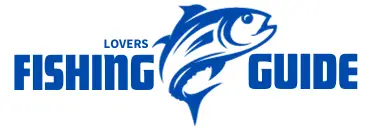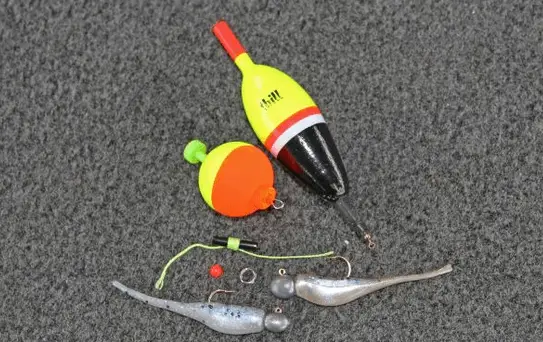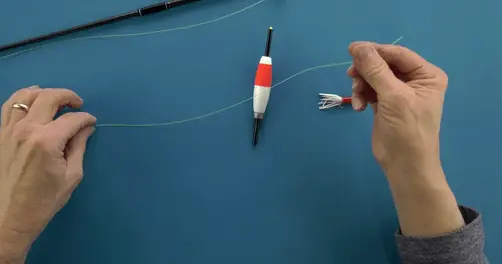To use a slip bobber, attach slip bobber to your fishing line and adjust the depth based on the fish you’re targeting. Let’s delve into the details of how to properly utilize this fishing tool.
Using a slip bobber can greatly improve your fishing success by allowing you to precisely position your bait at the desired depth. Whether you’re an experienced angler or a beginner, mastering this technique can make a significant difference in your catch.
We will guide you through the step-by-step process of using a bobber effectively. From selecting the right bobber to adjusting the depth and casting techniques, we’ll cover everything you need to know to elevate your fishing game. So, let’s dive in and learn the art of slip fishing bobber !
Choosing The Right Slip Bobber
When it comes to successful slip fishing bobber , one of the most crucial decisions you need to make is choosing the right bobber. This small yet essential piece of equipment plays a vital role in determining your fishing experience. By selecting the appropriate bobber, you can maximize your chances of hooking the perfect catch. In this section, we will discuss the factors you need to consider and the steps to follow in order to select the ideal bobber for your fishing needs.
Consider The Fishing Conditions
Before you start looking for a slip fishing bobber, it’s important to take into account the fishing conditions you will be facing. The type of water you will be fishing in, the target species, and the time of day all have an impact on the bobber you should select. Here are a few points to keep in mind:
1. For calm waters, you can choose a lighter slip-bobber that will be less visible to the fish.
2. If you are fishing in rough waters or areas with currents, a larger and more buoyant slip-bobber will be necessary to keep your bait in place.
3. If you are targeting larger fish species, such as bass or walleye, opt for a slip bobber that can handle the weight and resistance of these fish.
Selecting The Correct Size And Weight
Another important factor to consider when choosing a slip bo bber is its size and weight. Selecting the correct size and weight ensures that your slip bo bber is properly balanced and provides the necessary sensitivity for detecting bites. Here’s what you should keep in mind:
1. Choose a slip bobber with a size that matches the weight of your bait. A slip bobber that is too large may cause your bait to sink too deeply, while a slip-bobber that is too small may not be visible enough to attract fish.
2. Ensure that your slip-bobber is buoyant enough to keep your bait at the desired depth. A slip-bobber that is too light may not be able to support the weight of your bait, causing it to sink, while a slip bobber that is too heavy may cause your bait to float too close to the surface.
3. Consider the visibility of your slip-bobber. If the water conditions are clear, a brightly colored or fluorescent slip bobber can help attract fish. In muddy or murky waters, a more subtle and natural-colored bobber may be more effective.
By taking into account the fishing conditions and selecting the correct size and weight, you can ensure that your slip bobber is perfectly suited to your fishing needs. Remember, the right slip bobber can make all the difference in your fishing success. So, invest the time to choose wisely and enjoy a rewarding fishing experience!
Attaching The Slip Bobber Rig
When it comes to fishing with a slip bobber, one of the most important steps is attaching the bobber rig. This is where you secure the bobber, weight, and stop knot onto your fishing line. By properly setting up your slip bobber rig, you can easily adjust the depth and keep your bait at the desired level in the water. In this guide, we’ll walk you through the process of tying the stop knot and attaching a weight.
Tying The Stop Knot
Tying a stop knot is crucial to prevent the bobber from sliding all the way down the line. This knot acts as a stopper, allowing you to set the depth of your bait. Here’s a simple method to tie a stop knot:
1. First, locate the desired depth you want your bait to be in the water.
2. Take the fishing line and thread it through the slip bobber, leaving a long tag end.
2. Next, double back the tag end and make a loop around the main line.
3. Repeat the previous step two more times, creating a total of three loops.
4. Hold the three loops together and pass the tag end through them.
5. Gently tighten the knot, ensuring it is snug but not too tight that it cuts into the fishing line.
With the stop knot tied, you can easily adjust the depth of your bobber by sliding it up or down the fishing line.
Attaching A Weight
After tying the stop knot, it’s time to attach a weight to your slip bobber rig. The weight serves two important purposes: it helps to cast your bait further and ensures that the bobber stays upright in the water. Here’s how you can attach a weight:
- Select an appropriate weight for your fishing conditions and target species. This could be a split shot weight or a slip sinker.
- Slide the weight onto the fishing line, above the stop knot.
- Make sure the weight is secure and positioned about a foot or two above your hook.
- Check that the weight is heavy enough to sink your bait to the desired depth, but not too heavy that it hampers the bobber’s movement.
By attaching a weight, you’ll have better control over your cast and ensure that your bobber stays visible and responsive in the water.
Setting The Depth
A slip bobber is a simple yet effective tool for fishing at a specific depth. In order to maximize your chances of success, it’s important to properly set the depth of your bobber. By doing so, you can ensure that your bait or lure is in the strike zone where fish are actively feeding. In this article, we will discuss how to set the depth of a slip bobber using a bobber stop and by adjusting the depth of the line.
Utilizing A Bobber Stop
A bobber stop is a small device that is attached to your fishing line above the bobber. Its purpose is to prevent the bobber from sliding further up the line, thereby setting the desired depth. To utilize a bobber stop, follow these simple steps:
- Select a suitable bobber stop, such as a small rubber bead or a knot-tying bobber stop.
- Thread the stop onto your fishing line, ensuring it is positioned a few inches above the slip bobber.
- Secure the bobber stop in place by tying a knot below it.
- Test the position of the stop by sliding the slip bobber up the line until it reaches the stop.
By utilizing a bobber stop, you can easily set the depth of your slip bobber and ensure it remains in place throughout your fishing expedition.
Adjusting The Depth
If you need to adjust the depth of your slip bobber after initially setting it, you can do so by following these steps:
- Reel in the line until the slip bobber is close to the rod tip.
- Hold the bobber with one hand, using your other hand to grasp the fishing line just above the bobber stop.
- Gently pull the line through the bobber stop to release it.
- Slide the bobber up or down the line to the desired depth.
- Hold the position of the bobber with one hand while pulling the line through the bobber stop again to secure the new depth.
Casting And Retrieving
When it comes to using a slip bobber, understanding the proper techniques for casting and retrieving is essential. These techniques will determine the accuracy of your cast and the effectiveness of your presentation. In this section, we will cover the key aspects of casting and retrieving a bobber rig to help you make the most out of your fishing experience.
Casting Techniques
Casting a slip bobber rig requires a combination of accuracy and finesse. Here are some casting techniques to help you achieve a successful cast:
- Start by holding the fishing rod with a relaxed grip, making sure your finger is on the line and ready to release it.
- Align your body with the target area and take a step forward with your leading foot.
- Swing your arm back smoothly, loading the rod with energy.
- As you reach the forward motion, release the line with a gentle flick of your finger.
- Follow-through with your cast, allowing the line and bobber to travel to the desired location.
Remember, practice makes perfect, so don’t get discouraged if your first few casts aren’t as accurate as you’d like. With time and experience, you’ll refine your casting technique and become more consistent.
Retrieving The Bobber Rig
Once you have cast your slip bobber rig, it’s important to retrieve it properly to entice the fish and maximize your chances of a successful catch. Here’s how to retrieve your bobber rig:
- Start by reeling in the slack line until you can feel the resistance of the bobber.
- Retrieve the bobber rig with a slow and steady motion, keeping tension on the line.
- Pay attention to any movements or twitches of the bobber, as these could indicate a fish bite.
- If there is no action after a few minutes, consider adjusting the depth or changing the presentation to attract the fish.
In Summary
Casting and retrieving are two fundamental techniques for using a slip bobber. By mastering these techniques, you can increase your accuracy, entice more fish, and have a more successful fishing experience.
Tips For Effective Use
When it comes to fishing with a slip bob ber, there are several essential tips for effective use that can make your fishing experience more successful and enjoyable. By knowing how to use a slip bob ber effectively, you can increase your chances of catching more fish and make the most of your time on the water.
Using Live Bait
When using a slip bobber, live bait can be highly effective in attracting fish. Options such as minnows, worms, or leeches can be suspended at the desired depth using a slip bobber, and the natural movement of live bait can entice fish to bite. Make sure the bait is lively and attractive, and adjust your bobber stop to the appropriate depth for the specific bait you’re using.
Being Patient And Observant
Patience and keen observation are critical when fishing with a slip bobber. Being patient and observant allows you to detect even the slightest movements of the bobber, indicating a fish’s interest. Stay alert and focused on your bobber, and be prepared to act quickly when you notice any unusual activity.
Last Word
Using a slip fishing bobber can greatly enhance your fishing experience, providing you with better control and visibility. By following the simple steps outlined in this guide, you can easily master the art of using a slip bobber. Remember to choose the right setup, adjust the depth correctly, and use the right bait for your target fish.
With practice and patience, you’ll soon find yourself reeling in more catches than ever before. So, get out there and give slip bobber fishing a try!


